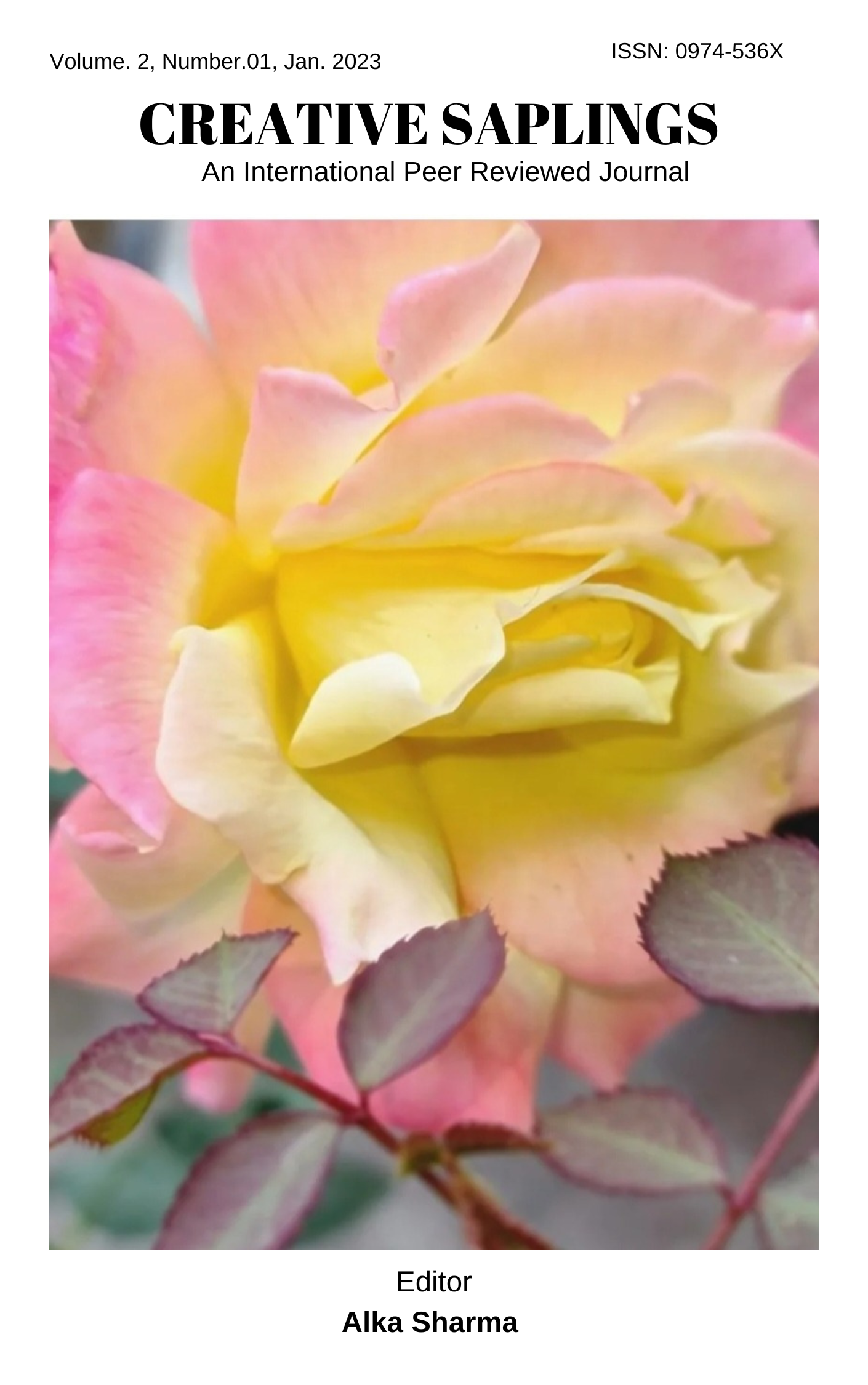Traces of Phallocentrism, Trauma and Holocaust Imagery in What the Body Remembers and Ice Candy Man
DOI:
https://doi.org/10.56062/gtrs.2023.1.10.194Keywords:
Phallocentrism, What the Body Remembers, Ice Candy Man, Partition, violence.Abstract
Apart from wars, the Partition of India and Pakistan was one of the most horrific events in human history. Massacres, rapes, and sexual torture were used to promote racial hate, and women suffered a great deal more than males. Many people lost their lives, their homes, and even their identities. Therefore, this essay explores how the horrific Partition era affected the lives of women by turning them into silent victims of phallocentric or male supremacy through the Partition novels from which Shauna Singh Baldwin's What the Body Remembers and Bapsi Sidhwa's Ice Candy Man have been taken. Women were kidnapped, raped, forced into prostitution, and died during Partition. In the Rawalpindi area, where Muslim mobs preyed on women, systematic violence against women first appeared in March 1947. Before further attacks, many Sikh women committed suicide by jumping into water wells to save honour and avoid conversion. Due to phallocentric society's rules, the time of Partition was a traumatic experience for women on physical, emotional, political, social, and sexual levels. These female writers wrote about these experiences through a female perspective, which demonstrated resistance and retaliation against phallocentrism or the male point of view. Because of this, the present dissertation will add new aspects to the established canon of women, trauma, and phallocentrism.
Downloads
References
Work Cited:
Akhtar, Almas et al. “Female Oppression and Marginalization in Ice Candy Man by Sidhwa and the Holy Woman by Shahraz.” Journal of Literature, Languages and Linguistics, vol. 16, 2015, p. 21.
Anuma. “Gender Discrimination in Shauna Singh Baldwin's What the Body Remembers.” International Journal of English and Literature, vol. 4, no. 1, Feb 2014, pp. 15+.
Baldwin, Shauna Singh. Interview. By Ben Patchsea, https://www.shaunasinghbaldwin.com/wp-content/uploads/2016/08/Interview-BenPatchsea-WhatTheBodyRemembers.html.
Baldwin, Shauna Singh. What the Body Remembers. Anchor Books, 2001.
Book Review: Shauna Singh Baldwin’s ‘What the Body Remembers’, A Heady Mix of Punjab, Partition and Womankind.” India Today, 20 Sep 1999, https://www.indiatoday.in/magazine/society-the-arts/books/story/19990920-book-review-shauna-singh-baldwin-what-the-body-remembers-824182-1999-09-20.
Dey, Arunima. “The Female Body as the Site of Male Violence During the Partition of India in Bapsi Sidhwa's Ice Candy Man.” Complutense Journal of English Studies, 2018, pp. 27+. CJES, http://dx.doi.org/10.5209/CJES.54661.
Dodiya, Jaydipsinh. Parsi English Novel. Sarup & Sons, 2006, Google Books, pp. 89-90. www.google.co.in/books/edition/Parsi_English_Novel/-NvXoUkeL_kC?hl=en&gbpv=1.
Grosu-Radulescu, Lucia-Michaela. “Objectification of Women and Violence in What the body Remembers.” Rupkatha Journal on Interdisciplinary Studies in Humanities, vol. 8, no. 1, 2016, pp. 87+.
Harenda, Olivier. “‘Git-Mit, Git-Mit Talk’: A Woman's Perspective on the Partition of India in Shauna Singh Baldwin's What the Body Remembers .” Trans Canadiana, no. 9, 2017, p. 269.
Jaggi, Parneet. “The “Cracking” Metaphor in Bapsi Sidhwa's Cracking India.” International Journal of English and Literature, vol. 5, no. 1, Feb 2015, pp. 51+.
Jajja, Mohammad Ayub. “Portrayal of Partition by Bapsi Sidhwa and Khuswant Singh: A Comparative Study.” Pakistan Journal of Social Sciences, vol. 32, no. 1, 2012, p. 216.
Khalil, Muhammad Zohaib et al. “Sidhwa’s Feminist Thought in Ice Candy Man: A Feminist Study in The Light of Religion and Social Laws.” Studies in Literature and Language, vol. 14, no. 2, 2017, pp. 26+.
Kleist, Jacquelynn M. “More Than Victims: Versions of Feminine Power in Bapsi Sidhwa’s Cracking India.” Pakistaniaat: A Journal of Pakistan Studies, vol. 3, no. 2, 2011, pp. 69+.
Misri, Deepti. “The Violence of Memory: Renarrating Partition Violence in Shuana Singh Baldwin’s What the Body Remembers.” Meridians: Feminism, Race, Transnationalism, vol. 2, no. 1, 2011, pp. 1+.
Mitra, Madhuparna. “Contextualizing Ayah's abduction: patterns of violence against women in Sidhwa's Cracking India.” ARIEL, vol. 39, no. 3, Jul 2008, pp. 23+.
Nancy. “Violence Against Women in Partition: Depiction in Ice Candy Man and Pinjar.” International Journal of English Language, Literature and Translation Studies, vol. 2, no. 3, Jul-Sep 2015, pp. 187+.
Purohit, Radhika. “What the Body Remembers: A Feminist Perspective of The Partition of India and Pakistan.” International journal of English and Literature, vol. 3, no. 4, Apr 2012, p 94-96.
Ray, Sangeeta. En-gendering India: Woman and Nation in Colonial and Postcolonial Narratives. Duke University Press, 2000, pp. 135-36.
Roy, Rituparna. South Asian Partition Fiction in English from Khushwant Singh to Amitav Ghosh. Amsterdam University Press, 2010, p. 71.
Sidhwa, Bapsi. Ice Candy Man. Penguin Random House, 1989.
Sultan, Hafiza Mavra and Abdul Ghafoor Awan. “Comparative Analysis of “Ice Candy Man” , “Train to Pakistan” and “Alakh Nagri” in Perspective of Creation of Pakistan.” Global Journal of Management, Social Sciences and Humanities, vol. 3, no. 2, Apr-Jun 2017, pp. 248+.
Tharoor, Shashi. “Life With Electric-aunt and Slavesister.” The New York Times, 6 Oct 1991, https://www.nytimes.com/1991/10/06/books/life-with-electricaunt-and-slavesister.html.
Tripathy, Anjali. “Remembering and Re-Remembering The Body: Resistance in Shauna Singh Baldwin’s What the Body Remember.” Subaltern Speak, vol. 2, no. 2, Apr 2013, p. 22.
Downloads
Published
Issue
Section
License
Copyright (c) 2023 Aisha Haleem

This work is licensed under a Creative Commons Attribution-NonCommercial 4.0 International License.





